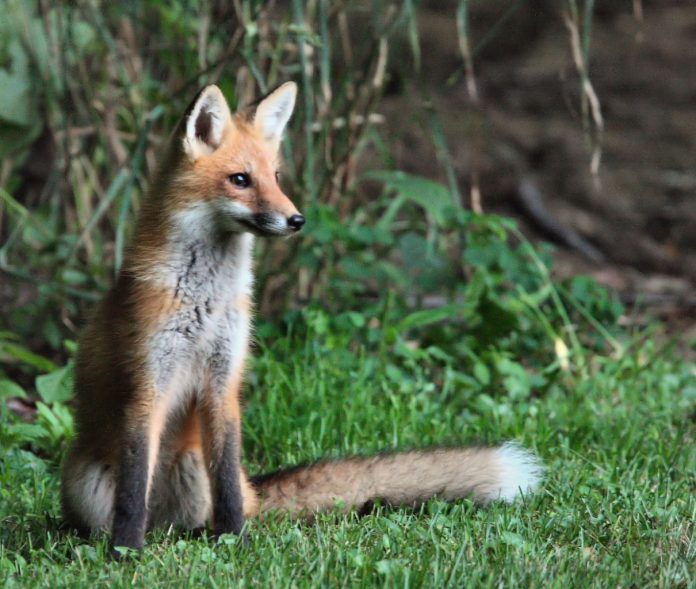BURRILLVILLE – They’re known for their cunning nature, and for the past several months, they’ve been sneaking about in backyards and wooded areas, keeping the location of their dens a secret.
But with pups now big enough to wander off on their own, red foxes have come out of hiding, and residents have had an increased number of sightings over recent weeks in Burrillville.
“We typically receive a number of calls about foxes – many, if not most, during the May-June time period, and many about dens under sheds, barns, decks, etc,” said Charlie Brown, wildlife biologist for the Rhode Island Division of Fish and Wildlife. “You don’t see any activity until the foxes start to venture out. Prior to that, the adults are often quite secretive about their coming and going around the den and are often not seen at all.”
The sly creatures are not alone. Animals like bobcats and bears also bare their young in the spring, and early summer is a time when wildlife seems to roam free in the town’s backyards and forests.
“I would say this time of year juvenile male bears are disbursing from their mothers’ home ranges,” said Brown. “It’s not atypical of them to go on long walkabouts.”
Bear populations, Brown notes, are growing in the state at a rate of about 8-10 percent per year.
“It’s going to become an increasingly common occurrence,” he said of the sightings, which frequently come from the north west corner of the state. “The bear population in neighboring states of Massachusetts and Connecticut kind of keeps progressing toward the Atlantic Ocean.”
The state’s bobcat population, Brown notes, also appears to be growing.
“There’s been an increasing trend in bobcat sightings – mostly in the past 3-5 years,” said Brown, noting the part of the phenomenon can be explained by the increase in outdoor cameras to capture the wildlife. Still, “I think it’s more than that,” he said, pointing to an increase in road kill.
Brown said his department is “very interested” in hearing about bobcat sightings for tracking purposes, and residents are asked to take note of the date, location and activity. He hopes they’ll also report bear sightings for similar reasons.
As for foxes, as long as they’re healthy, the animals pose little or no threat to humans. Foxes have been known to attack house cats, so residents are warned to keep domestic animals inside at night. A RIDEM fact sheet on the animals notes that foxes are not aggressive towards people and attacks on people are extremely rare.
And those discovering dens under their sheds and decks are reminded that the sites are only used temporarily and will be soon be abandoned, if they haven’t already.
“Once you are certain that the burrow is no longer being used make efforts to seal it up, being careful not to inadvertently trap an animal under the shed or deck,” said Brown. “Never feed them and remove any potential food sources.”
The animals are responsible for many of the strange noises residents report hearing in the night. Foxes will bark, yelp, screech, and often emit sounds akin to an actual person screaming – a noise often erroneously attributed to a fisher.
Those seeking additional information concerning fox problems can visit www.wildlifehelp.org. They can also contact RIDEM’s Division of Fish and Wildlife Field Headquarters at 401-789-0281. The number can also be used to report sightings of bears and bobcats and while the agency will not necessarily respond to an incident, the information will be used in the state database.







